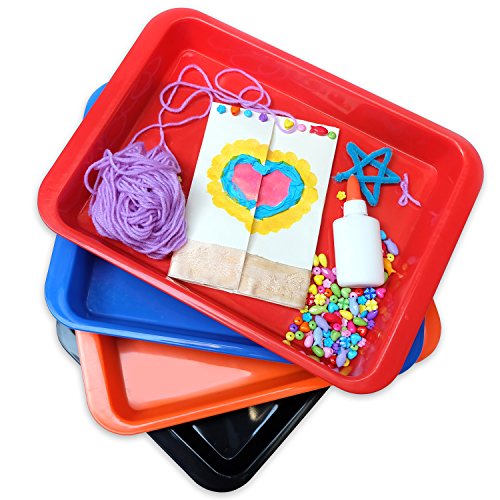Transform classic baking soda science into something fit for Valentine’s Day STEM activities with these super-fun fizzing hearts reactions learning about Valentines Day baking soda science! My preschooler is a huge fan of vinegar and baking soda reactions. She always gets really excited when she sees me breaking out the vinegar and baking soda. She loves watching the fizzy reactions and playing in the mixture when it’s done reacting. We’ve made fizzing rainbows, fizzing ornaments, and fizzing Easter eggs.

This time, I decided to make the experiment Valentine’s Day themed with these fizzing hearts!
My kids had a blast with this simple experiment, and it was so much fun to see the hearts melt away.
Table of Contents
Valentines Day Baking Soda Science
Kids will love this fun Valentine’s Day twist on the classic baking soda and vinegar reaction science experiment.
It’s a fun way to bring a little love into your science classroom!
Kids will have a blast squeezing vinegar onto their hearts and watching them slowly melt away.
Valentines Day Baking Soda Science Explanation
These fizzing hearts are the perfect way to introduce preschoolers to chemical reactions!
When baking soda and vinegar react, it creates a reaction that releases carbon dioxide gas.
This is what causes the baking soda to fizz.
The baking soda and vinegar reaction is what is known as an endothermic reaction, because the resulting reaction is cooler than the surrounding air.
Who knew science could be so fun! You can also learn what is a chemical reaction for kids to complete your chemistry lesson plan.
Also try these other chemical reactions: borax slime, laundry starch slime, melting pokeball, and fluffy slime!
More Valentine’s Science Experiments
These science experiments are all preschool-friendly!
- Valentine Glitter Slime
- Homemade Bouncy Ball Valentine
- Coding Caterpillar Challenge Valentine
- Make a Stethoscope
Classroom Valentines from Teachers to Kids
Your students will love any of these creative classroom valentines for kids from their teacher!
Printable Tea Pun Valentines that Kids Will Love
Zoo You Want to Be My Valentine Zoo Printable Valentines
Army Men Printable Valentines for Kids
Printable STEM Valentines for Kids
Ingenious School Valentines Ideas For Classmates
Magic Erupting Color Reveal Science Valentines for Kids
Printable Punny Chemistry Valentines for Kids
Printable LEGO Valentines for Aspiring Engineers!
Invisible Ink Classroom Valentines
Classroom Valentine Food Building Valentines
Parachute Classroom Valentines
Classroom Valentines Erupting Volcano Science
Classroom STEM Robot Building Kit
Classroom Fuse Bead Valentines
Paper Plane Classroom Valentines
Flower Building Classroom Valentines
Valentines Day Appliance Building Block Valentines
Animal Building Classroom Valentines
Fizzing Heart Reaction STEM Integration
Science: Try different variables: will changing the temperature of the vinegar alter the reaction? Will other acids cause a reaction? Will adding more base ingredients stop the reaction?
Technology: Try filming the reaction and watch it again later!
Engineering: Do different shapes change how the reaction happens?
Math: See how long it takes for the reaction to stop.
What you’ll need to make fizzing hearts baking soda science:
Disclaimer: This post contains affiliate links at no cost to you for your convenience.
ARM & HAMMER Baking Soda, 13.5 PoundWilton 417-2588 6-Piece Nesting Fondant Double Sided Cut Out Cutters, Hearts
Food Coloring Liqua-Gel – 12 Color Variety Kit in .75 fl. oz. (20ml) Bottles
Heinz Distilled White Vinegar, 1 gallon
Doodle Hog Crafts Arts and Crafts Multi Purpose Medium Organizer Tray Set, Medium (Pack of 4)
- Baking soda
- Heart cookie cutter
- Vinegar
- Red food coloring
- Pipettes (to control how much vinegar is used)
- Small dish
Teaching Resources for Valentine’s Day
Here are some fun STEM teaching resources for Valentine’s Day that you can use in the classroom.
Browse the entire category of Valentine’s Day classroom supplies here or grab some of my Valentine’s Day favorites from the list below.
Exploding Candy Lab Science Kit
Chemistreats Classroom Candy Science Kits
Lollipop Lab Candy Science Kit
Valentine Building Block Bears
LEGO Friends Flower and Chocolate Kit
LEGO Pop up Valentine Card with Swans
Valentines Day Baking Soda Science Experiment Directions
Here is how to do the Valentines Day baking soda science experiment!
First, mix just enough baking soda with water to make a paste. Add a couple of drops of red food coloring and mix.
Valentine Science Books and More!
These fun Valentine’s Day Books for kids will teach kids about the science around Valentine’s Day, the history of the holiday, and a whole lot more!
The Calendar Kids Meet February Book
In My Heart a Book of Feelings
I Love You Around the World Valentine Coloring Book
Candy Bites the Science of Sweets
Celebrate Valentine’s Day Holidays Around the World
Build Valentine’s Day Fun with LEGO
Place your heart cookie cutter into your dish and place the baking soda paste into the cookie cutter.

Mash the paste with your fingers to mold it to the heart shape.
Carefully pull the heart cookie cutter away from the paste and you’ll be left with a heart.

Give the dish to your kids and give them a little dish of vinegar and a pipette.

Instruct the kids to use the pipette to scoop up vinegar and squeeze it onto the baking soda hearts. They will start to fizz and react.

Repeat the process until the reaction stops.
Valentine Classroom Decorations
Add some Valentine’s Day festivities and flair to your classroom with these classroom decorations for Valentine’s Day!
Valentine’s Day Door Decorating Kit
Tissue Paper Classroom Valentine’s Door Decorations
Valentine’s Day Classroom Window Clings
Valentine Letters Classroom Door Decorations
Valentine’s Day Classroom Decorating Kit
Our Class is Sweet Cupcake Valentine’s Day Classroom Decorating Kit
Our Love for Learning Grows and Grows Classroom Decorations
A Class Full of Sweethearts Classroom Decorations for Valentine’s Day







































































